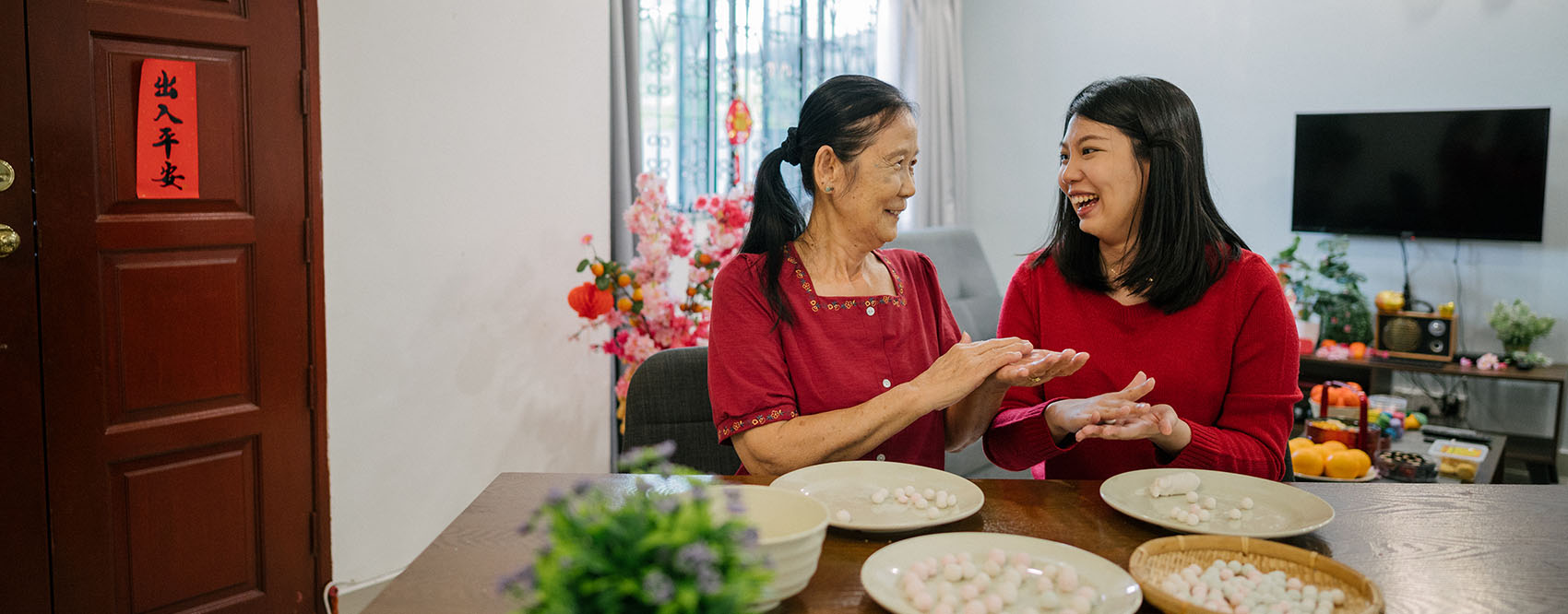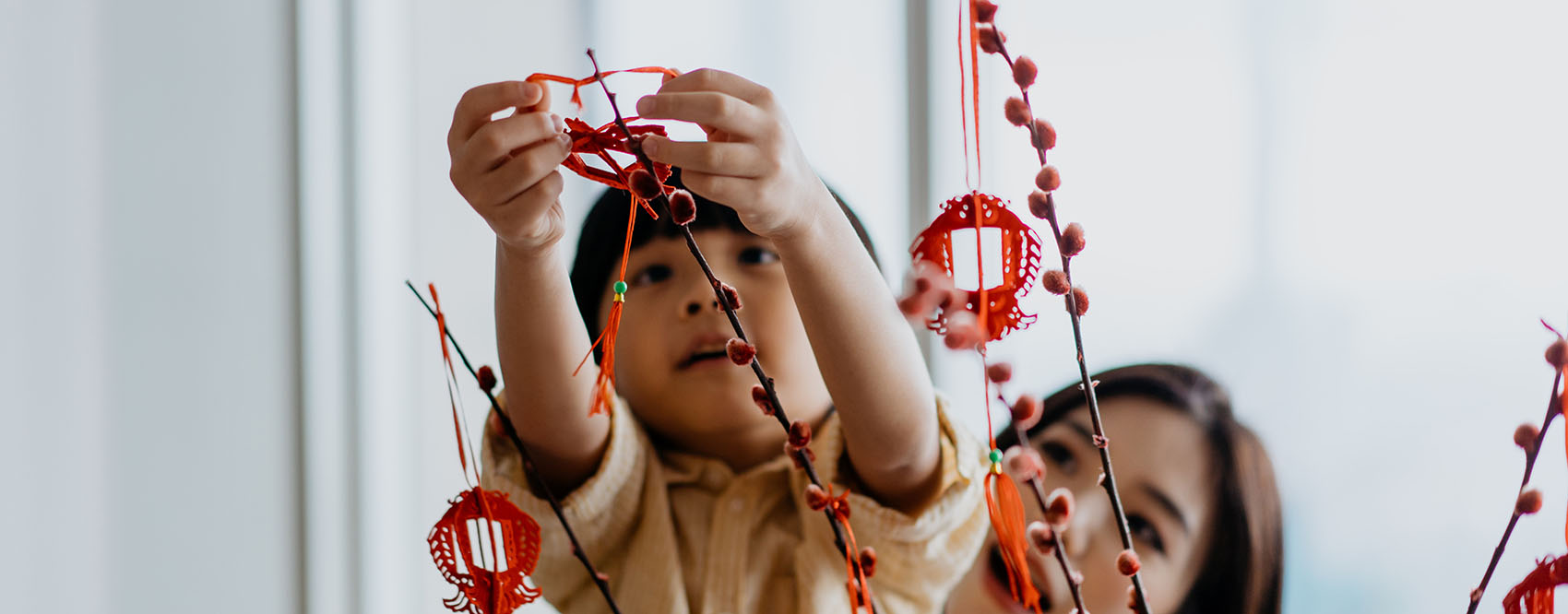BCAA wishes you a Happy Lunar New Year!
Celebrating Lunar New Year in BC
Lunar New Year, also known as Chinese New Year, is the largest and most important celebration for the Chinese community. The festival is also celebrated in Vietnam (known as Tet), North and South Korea (known as Seollal) and Tibet (known as Losar).
Lunar New Year begins on the new moon occurring between the end of January and the end of February and it lasts until the full moon arrives on the 15th day of the New Year. This year, Lunar New Year falls on Saturday, February 10, 2024, and celebrations culminate with the Lantern Festival on Saturday, February 24, 2024.
Welcoming the Year of the Dragon
Each year the Chinese calendar is represented by one of 12 zodiac animals, and Lunar New Year marks the passage from one animal to the next. The animals are the rat, ox, tiger, rabbit, dragon, snake, horse, goat, monkey, rooster, dog and pig. Each animal has its own set of attributes, and it is believed that people born in that year have the personality traits of the associated animal.
This coming year is a powerful one as we are entering the Year of the Dragon. The dragon, of course, is the only imaginary animal in the Chinese zodiac and possesses the greatest vitality and power. People born in years of the dragon are said to be ambitious, confident, generous, and idealistic.
To help you start this Year of the Dragon with family, friends and togetherness, here’s a helpful guide filled with events around BC, traditions, crafts, and kitchen must-trys.
Lunar New Year Events in BC
Here's how to enjoy Lunar New Year festivities near you:
Greater Vancouver
- 50th Annual Chinese New Year Parade
When & where: February 11 in Vancouver’s Chinatown
The parade boasts elaborate lion and dragon dances, bands, costumes and other floats as it winds through downtown streets. Bring the family if you love crowds and want to enjoy traditional firecrackers. -
Canucks Lunar New Year Event
When & where: January 27, 2024 in Rogers Arena
This is a resurgent season for the Vancouver Canucks and you can see them take on the Columbus Blue Jackets for the 2024 Canucks Luna New Year Game Night. BCAA Members save up to 30% on tickets and watch for special Lunar New Year jerseys for sale on Vanbase and in the Rogers Arena game store. -
Chinese New Year Flower and Gift Fair
When & where: February 2-11 in Aberdeen Centre.
Stock up on essentials like decorations, food, gifts, apparel, accessories and more. The mall will feature cultural displays like the infamous Golden Dragon and Lion Dance. -
The Lantern City
When & where: Beginning February 9th at Jack Poole Plaza, Ocean Artworks at Granville Island, and šxʷƛ̓ənəq Xwtl’e7énk Square (North of the Vancouver Art Gallery).
Lantern City showcases glowing community lanterns designed from local artists that light up our festive city. Learn more here. -
Flyover Canada
When & where: January 22-February 11 at Canada Place.
Now an annual tradition, Flyover Canada hosts a special, limited time screening of an East Asian destination. Soar over the iconic flights of Taiwan this Lunar New Year. Buy tickets here.
Okanagan
-
Lunar New Year: Embrace the Nations - A Vernon Winter Carnival Event
When & where: February 11 at the Vernon Elks Lodge
Ring in the East Asian New Year with authentic culinary treats, cultural activities such as red lantern making and watch captivating Taiko drummers from Japan. -
OCCA Lunar Spring Lantern Festival
When & where: February 10 at 5:00pm, Apple Hall, Parkinson Recreation Centre, Kelowna
Experience dance performances, try your hand at calligraphy or indulge in some mouthwatering sweet and sour pork at this fantastic event. Find out more here.
Vancouver Island
-
Canada’s oldest Chinatown
When & where: Year-round in downtown Victoria
Developed by a massive influx of miners in 1858, Victoria’s Chinatown is home to hip restaurants and quirky shops. Try something new like durian, dragon fruit or a traditional Chinese banquet. -
Lunar New Year Dinner Gala
When & where: February 3 at 5:00pm, Beban Park Social Centre, Nanaimo
Watch local artistic groups perform lantern dances, play traditional instruments, Kung Fu displays, and songs. The best part: local restaurants lay out a delicious Asian-style buffet. Buy tickets here.
Lunar New Year Traditions
Celebrating Lunar New Year comes with a wealth of customs and traditions, with many being centred around gifting and welcoming family and loved ones into the home.
Clean and decorate your home for the New Year
To bring a fresh start and rid your home of any bad luck accumulated in the past year, you should sweep, scrub, mop, dust, vacuum and steam – all to make sure your home is clean before the stroke of midnight on Lunar New Year’s Eve, February 10, 2024. It's common place to decorate your clean home with red lanterns and scrolls printed with lucky messages, hung on household entranceways and gates.
Wear new clothes
One of the oldest traditions is acquiring new clothes for the New Year. New clothing has symbolic meaning, representing the theme of change, new beginnings and ridding of the old. The new clothes are worn on the first day of the New Year, and new pajamas may be worn to sleep on New Year’s Eve.
Red Envelopes
At Lunar New Year, it’s tradition to give children the gift of red envelopes containing money. These beautifully decorated envelopes are filled with money and symbolize well wishes and good luck for the year ahead. Keep an eye out for these in participating BCAA Service Locations over the Lunar New Year period (subject to availability).
New Year’s Eve Dinner
Spending time with family is a big part of Lunar New Year. The “reunion dinner” on New Year’s Eve is considered to be one of the most important parts of the celebration. Food also plays a significant and symbolic role throughout New Year celebrations. Here are some delicious ways to enjoy traditional dishes.

Traditional Lunar New Year food
Certain dishes are eaten during the Chinese New Year for their symbolic meaning, like luck, prosperity, and happiness.
You can find many of these foods at local grocery stores, restaurants and bakeries during the Lunar New Year period. If you’re feeling adventurous, try making these at home.
Jiao Zi (Dumplings)
Boiled dumplings are traditionally served at a Lunar New Year dinner – and are eaten to usher in wealth, prosperity and good luck for the year ahead. Traditionally made with ground pork, there’s also plenty of vegetarian, vegan and other meat alternatives too. Making dumplings is also a great way to connect with friends and family. Pleat, eat, repeat!
Yi Mein (Longevity Noodles)
These noodles are eaten on Lunar New Year’s Day to bring happiness and symbolize long life. They are longer than typical noodles and uncut, then either fried and served on a plate or boiled and served in a bowl with broth. Long-life noodles are an important celebratory dish in Chinese culture and a fun dish to make at home.
Nian Gao (Chinese New Year Cake)
Also called "rice cake" or "Chinese New Year cake", Nian Gao is a traditional food made from rice flour and eaten during Chinese New Year. Bakeries in Chinatowns throughout BC will have these sticky treats flying off the shelves so be sure to get in quick!

Have a wonderful New Year
At this special time of year, we wish your families happiness (xin nian kuai le), prosperity (gong xi fa cai) and good health (shen ti jian kang) during the year of the Dragon.
Share blessings to your friends and family with our Lunar New Year stickers available on WhatsApp and WeChat.
For other money-savvy ways to celebrate life's important moments together, join one of BC's largest Membership and rewards communities with us. Become a BCAA Member today!







